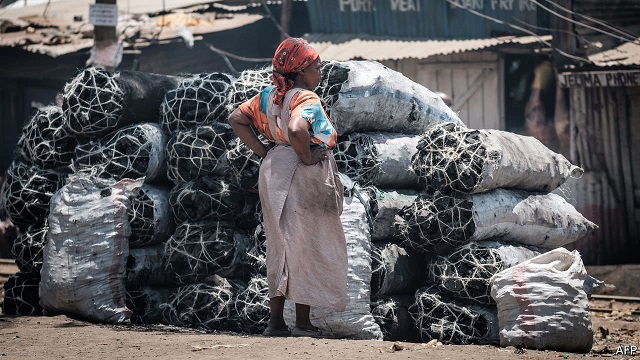
Gulu, Uganda | THE INDEPENDENT | Charcoal prices are fast rising in the Acholi sub-region with environmentalists warning that the trend could persist amidst the declining tree population. Ordinarily, charcoal has been relatively low in the region over the years with a sack previously selling between 15,000 to 25,000 Shillings.
However recently, the prices rose sharply in urban areas, especially in Gulu city where a bag of charcoal now costs between 35,000 to 65,000 Shillings. Sarah Apio, a retail charcoal dealer in Cerelenu market, Pece-Laroo Division, Gulu city says that the prices began skyrocketing around August this year owing to its scarcity.
She says whereas they had been purchasing charcoal from producers between 20,000 to 25,000 Shillings, the price rose to 30,000 and 40,000 Shillings. Apio notes that they are now selling charcoal to clients at 35,000 Shillings for a small bag, 45,000 for a medium bag, and 60,000 for a large bag.
She however believes the shortage that has created the hike in the prices is due to the ever-growing demand for charcoal in Central Uganda. “Most of the charcoal is ferried to the central part of Uganda, where demand is high, unlike this region. With the high prices now, the sales have become low because some customers can’t afford to buy,” says Apio.
According to the 2015 National Charcoal Survey, the northern region came second (21.8 percent) after the central region (63.4 percent) as the main source of charcoal supplied to Kampala, with Gulu being among the leading supplier-districts of charcoal.
Environmentalists and local leaders in the region however argue that the rising prices of charcoal could point to a number of factors. Arthur Owor, a researcher and the Executive Director of the Centre for African Research in Gulu city believes the tree population in the nearby areas has been depleted.
He says that charcoal producers have now turned to distant and hard-to-reach areas in search of virgin vegetation, which has led to increased costs of production and transportation.
Owor also notes that the attempts by district local governments in the region to embrace the charcoal business have made it lucrative thus leading to a hike in its prices.
Kenneth Okot, the LCIII chairperson of Atiak sub-county in Amuru district, says continuous sensitization of the community on the dangers of indiscriminate tree felling for charcoal production has helped to curb the trade. He says the sub-county, which has been a hotbed of charcoal production has since witnessed a decline in production, a move he believes has contributed to high prices.
Jimmy Ouna, the National Forestry Authority Range Manager for Aswa told Uganda Radio Network in an interview that vigilance by law enforcement teams and the dwindling natural resources has seen a decline in charcoal production.
He says whereas the trade still persists, it’s on a low scale compared to the previous years and reiterates it could be accounting for high prices owing to limited supply. Acholi sub-region has seen a declining population of trees especially endangered species like shear nut trees, which are destroyed for charcoal.
In December 2020, the Kitgum district council passed the Charcoal Control and Management Ordinance aimed at regulating the production, transportation, and marketing of the charcoal business. The bill however awaits to be adopted by the other seven district councils in the Acholi sub-region that will see regulation on the cutting of 17 tree species with cultural significance, and medicinal significance.
*****
URN
 The Independent Uganda: You get the Truth we Pay the Price
The Independent Uganda: You get the Truth we Pay the Price





